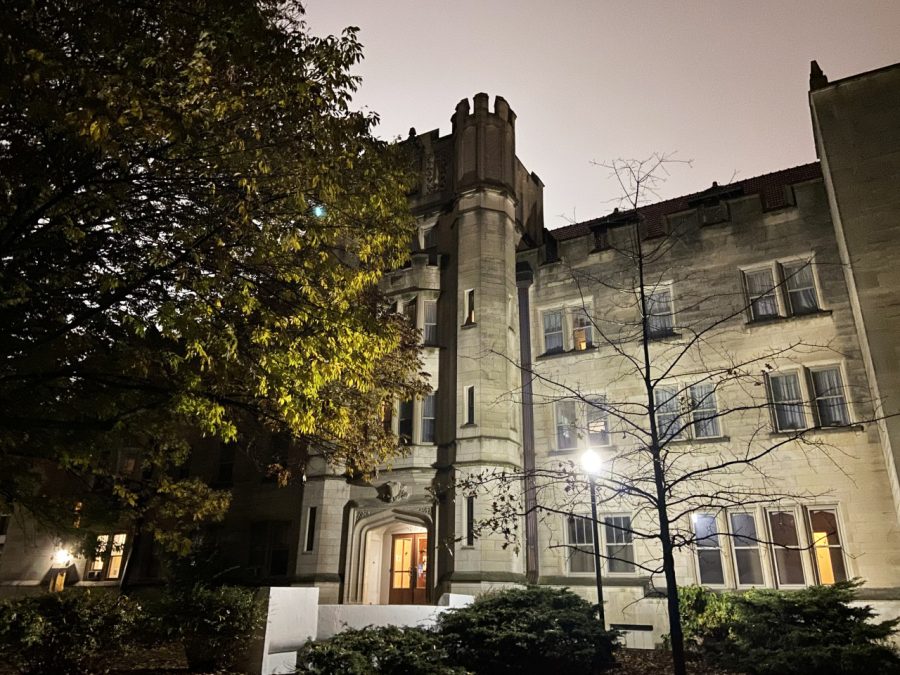History of Pemberton Hall: its namesake, legends
Pictured is the front of Pemberton Hall.
December 6, 2021
Pemberton Hall, named after Senator Stanton C. Pemberton, was the first dormitory built at a publicly supported university in the state of Illinois.
Pemberton is also one of the oldest buildings on campus, standing at over 100 years old.
Livingston C. Lord, who was the university president from 1898 to 1933, told the Board of Trustees in 1900 that he wanted to have a dormitory for women built on campus.
The board approved of the idea and a request for funding was taken to the governor in 1901 but was not approved.
In 1903, Lord took the idea to Senator Pemberton, who may have felt connected to the university since he lived nearby in Oakland.
The plan at this time included an attached gymnasium. When it appeared that the bill wouldn’t pass, Pemberton tried to get just the gym plan approved.
This plan passed in the legislature but was vetoed by Governor Richard Yates.
In 1905, Pemberton got the plan for the dorm and gym passed but it was again vetoed by a different governor, Charles Deneen.
Pemberton reintroduced the bill in 1907 and it was finally approved by Deneen.
The final proposal requested $100,000 and included plans for a gymnasium which was to be connected to the dormitory building.
Construction began in 1907 and was completed in 1909.
A proposal for the building to be considered a historic site, which was approved, describes Pemberton Hall as an example of “Collegiate Gothic Revival” architecture and references “castellation” on the entrances which may have been built to keep the building’s style consistent with the Old Main “castle.”
The hall was opened Jan. 4, 1909, with a commemorative dinner. At that time, the building housed and fed 100 women and provided meals for an additional 25 women each day.
Pemberton also housed the newspaper, yearbook and literary magazine until 1975.
Today, Pemberton can hold 120 students and is still one of the all-female residence halls on campus, but it no longer includes a dining hall.
The hall is still famous for the legend of the ghost of Mary Hawkins, a story which dates back to only 8 years after the building opened.
The story changes based on who is telling it but it usually involves a woman in the building being murdered by a janitor, whether the woman was Hawkins herself or a student she was responsible for as an RA.
In the first version, the janitor was annoyed at Hawkins for playing the piano late at night and bludgeoned her to death.
The second is even more gruesome: the janitor supposedly bludgeoned a resident who then dragged herself to Hawkins’ door, trying to get help. Hawkins, asleep, didn’t know anything was happening until she woke up and found a dead woman outside her door.
In reality, Hawkins began acting strangely toward the end of her time as an RA and president Lord signed papers to have her admitted to the Kankakee insane asylum.
She later died from symptoms of syphilis.
Still, the legend continues year after year.
Residents of the building report hearing piano playing at night or scratching on the walls and doors.
The fourth floor of Pemberton has been closed for safety reasons, but many students still believe that it is closed because of the murder in the myth.
Luke Taylor can be reached at 581-2812 or egtaylor@eiu.edu.


















![[Thumbnail Edition] Senior Foward Macy McGlone, getsw the ball and gets the point during the first half of the game aginst Western Illinois University,, Eastern Illinois University Lost to Western Illinois University Thursday March 6 20205, 78-75 EIU lost making it the end of their season](https://www.dailyeasternnews.com/wp-content/uploads/2025/03/WBB_OVC_03_O-1-e1743361637111-1200x614.jpg)

















































